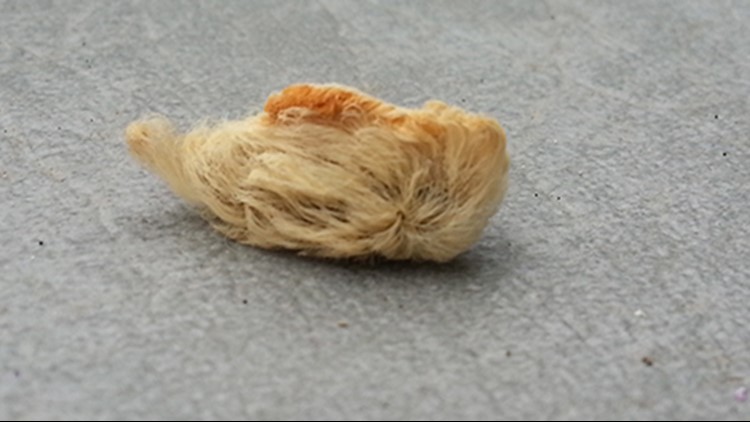It may resemble a furry Tribble from "Star Trek," but these poisonous caterpillars are far from gentle and cuddly.
National Geographic calls the puss caterpillar the most venomous in the U.S. -- sometimes causing more pain than a bee sting. Also known as an asp caterpillar, it’s the first stage in the life cycle of the Southern flannel moth.
Dr. Alfred Aleguas, director of the Florida Poison Center in Tampa, said the furry creatures are "really pretty," but can cause large rashes and pain so severe that people have ended up in the emergency room.
The soft hairs are a protective mechanism for the caterpillar and the poisonous spines will break off and stick in skin when they're touched, Aleguas said.
The caterpillars are most often found on oak and citrus trees and are most common during the spring and fall. Aleguas said his office has received about 30 calls so far this year regarding exposure to the puss caterpillar.
Aleguas said the number of caterpillars reported in Polk, Orange, Osceola and Seminole counties from Aug. 17 to Oct. 17 was 32. Across the state, 223 cases were reported.
Florida Poison Control said the puss caterpillar is a stout-bodied larva that can grow to an inch long when mature. The creatures are covered with gray or brown hairs. Under those hairs are stiff spines attached to poison glands.
In June, a Land O’Lakes mom posted about her son’s painful experience with a puss caterpillar while he was doing landscaping work. Her son told 10News it felt like someone took a power drill to his arm.
The culprit: a tiny, furry caterpillar.
Poison Control said not everyone experiences severe pain after coming in contact with the caterpillar, but it’s possible for some to have severe reactions that require medical attention.
If you come in contact with one of these creatures, Poison Control recommends placing clear tape over the affected area and stripping it off repeatedly to remove spines. You can also use ice packs to reduce stinging and follow with a paste of baking soda and water.
Those with a history of hay fever, asthma or allergies, or if an allergic reaction develops, should contact a doctor immediately.
►Make it easy to keep up-to-date with more stories like this. Download the 10News app now.
Have a news tip? Email desk@wtsp.com, or visit our Facebook page or Twitter feed.



